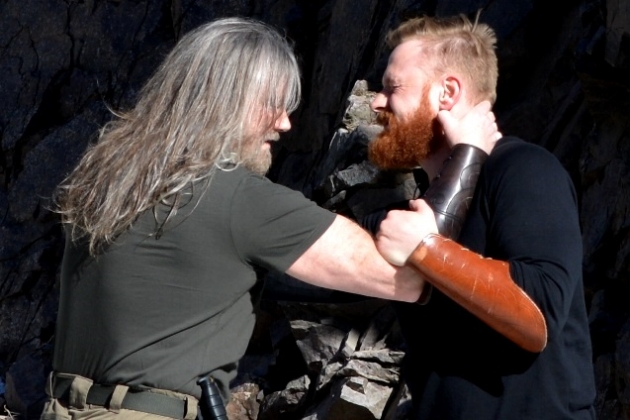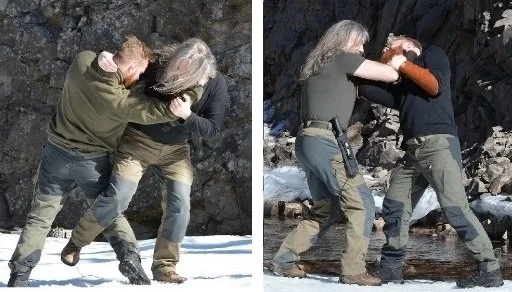Strikes can be used to get into a grappling situation in combat Laustak and sport Laustak, and grappling techniques can be used to set up strikes. In sport Laustak, this would mean open hand strikes used only for distraction or shock value in order to enable a takedown. In combat Laustak, these strikes can be for shock value or to inflict pain or damage.
There are many striking techniques that can be used effectively from a grappling situation, especially in combat Laustak. Open-hand strikes, punches, elbows, head-butts, kneeing and foot stomps can be used effectively in a clinch. Kicks can be nullified to some extent because of the proximity of the opponents, but some kicks are still effective in a clinch.
There are several types of grips or holds that are used to control the head or torso of an opponent in sport Laustak, or in a self-defense situation. Strikes from this extremely close position can be difficult for the unskilled, but a skilled Laustak grappler can utilize a clinch with a variety of pain techniques, chokes, short, quick strikes, or takedowns. When done correctly, they are extremely effective, because the opponent has difficulty rolling with the strike whilst being held.
In combat Laustak or self-defense situation where sport Laustak is used in a grappling situation, the Laustak grip can be utilized on an opponent’s clothing to control their body. This grip on opponents clothing can lead to a choke, lock, throw or takedown. By keeping hold of the clothing from the clinch after a takedown or throw, the clothing can then be used to choke an opponent on the ground.






